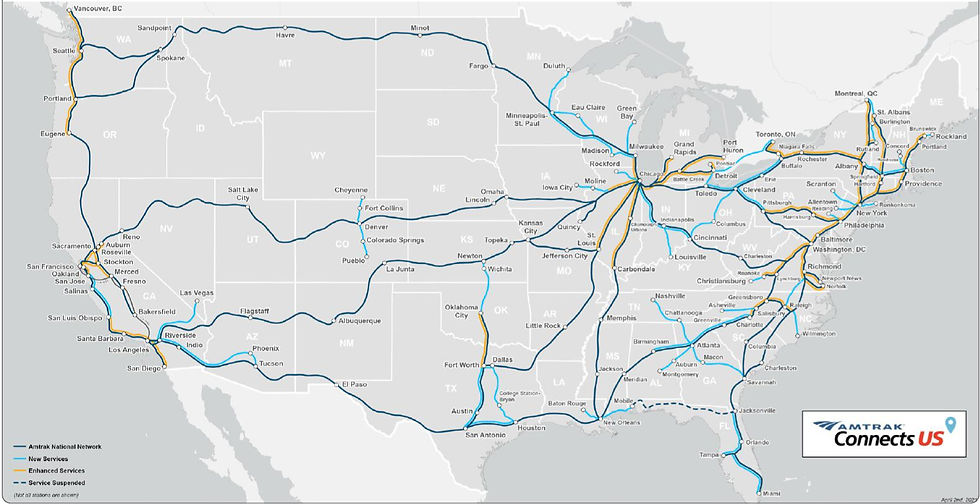Progress Report: Heartland Flyer Extension Next Steps
- Deborah Fischer Stout

- Oct 16
- 3 min read
Updated: Oct 20
By Deborah Fischer Stout, Northern Flyer Alliance, Inc.
The Kansas Department of Transportation (KDOT) continues to make steady progress to advance the Heartland Flyer Extension project. Through the Federal Railroad Administration’s (FRA) Corridor Identification and Development (Corridor ID) Program the project would extend the Heartland Flyer north from Oklahoma City to Newton, Kansas, where it would connect with the Southwest Chief.
This program provides a structured, step-by-step framework to help states and regional partners plan, develop, and ultimately deliver new or expanded passenger rail services. As shown in the FRA’s chart, the Corridor ID Program progresses through three major planning stages:
Step 1 – Scoping
Step 2 – Service Development Plan (SDP) Development
Step 3 – Preliminary Engineering / Environmental Process
Each step is supported by its own grant agreement through the Corridor ID Program.
Where We Are Now: Finishing Step 1
KDOT and its consultant team are currently wrapping up Step 1 – Scoping, which involves finalizing the Scope of Work (SOW), Schedule, and Budget based on FRA’s feedback from Kansas’ submitted Gap Analysis. That analysis helped identify areas where additional data or coordination would strengthen the Service Development Plan in Step 2.
Right now, KDOT and FRA are engaged in collaborative review sessions. Once FRA approves KDOT’s final SOW, Schedule, and Budget, the project can officially move forward into Step 2.

Looking Ahead to Step 2: Refining the Service Development Plan
In Step 2 – SDP Development, KDOT and its consultant will build upon previous planning work to incorporate FRA feedback. This next phase includes:
Enhanced engagement with host railroads
Further engineering reviews and operational assessments
Strengthening supporting information and methodologies
Updating and resubmitting the Service Development Plan (SDP) for FRA approval
The ultimate goal is to develop a robust, data-driven plan that positions Kansas’ passenger rail corridor for federal construction funding through programs such as the National Railroad Partnership Program (formerly the Federal-State Partnership for Intercity Passenger Rail).
Steady Progress Toward a Connected Future
As Martin Alvarez, Rail Project Coordinator for KDOT, shared:
“We’re meeting monthly with the FRA and are currently engaged in finishing our Step 1 work. Our last meeting provided an opportunity for our consultant team to really dial in the scope of work to be completed in Step 2 (Heartland Flyer Extension Next Steps).”
While no specific timeline for Step 2 has been confirmed, the ongoing collaboration between KDOT, FRA, and consulting partners marks a significant and encouraging milestone in the 20-year effort to restore passenger rail service to Wichita and Newton — reconnecting Kansas to the national rail network.
At the Northern Flyer Alliance, we remain committed to supporting this process, informing the public, and building the grassroots support necessary to continue progress and educate the public and private sectors as to the importance of passenger rail investment in our region.
Heartland Flyer Extension Next Steps
Complete Step 1 – Finalize changes and resubmit the Scope of Work, Schedule, and Budget for final FRA approval.
Begin Step 2 – Incorporate FRA feedback into an updated Service Development Plan.
Step 3 – Preliminary Engineering/Environmental Process
Upon completion of the first 3 Steps, apply for construction funding through the National Railroad Partnership Program.
Each step brings Kansas closer to reconnecting with the national passenger rail system and ensuring a seamless travel link between Texas, Oklahoma, and Kansas.











Comments